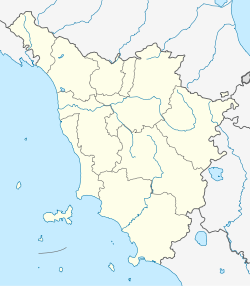Montevarchi | |
|---|---|
| Comune di Montevarchi | |
 Montevarchi in May 2008 | |
| Coordinates: 43°31′43″N11°34′12″E / 43.52861°N 11.57000°E | |
| Country | Italy |
| Region | Tuscany |
| Province | Arezzo (AR) |
| Frazioni | Caposelvi, Pestello, Levane, Levanella, Mercatale Valdarno, Moncioni, Rendola, Ricasoli, San Marco, San Tommè, Ventena |
| Government | |
| • Mayor | Silvia Chiassai |
| Area | |
• Total | 56.67 km2 (21.88 sq mi) |
| Elevation | 144 m (472 ft) |
| Population (1 January 2018) [2] | |
• Total | 24,440 |
| • Density | 430/km2 (1,100/sq mi) |
| Demonym | Montevarchini |
| Time zone | UTC+1 (CET) |
| • Summer (DST) | UTC+2 (CEST) |
| Postal code | 52025 |
| Dialing code | 055 |
| Patron saint | Saint Lawrence |
| Saint day | 10 August |
| Website | Official website |
Montevarchi is a town and comune in the province of Arezzo, Tuscany, Italy.







